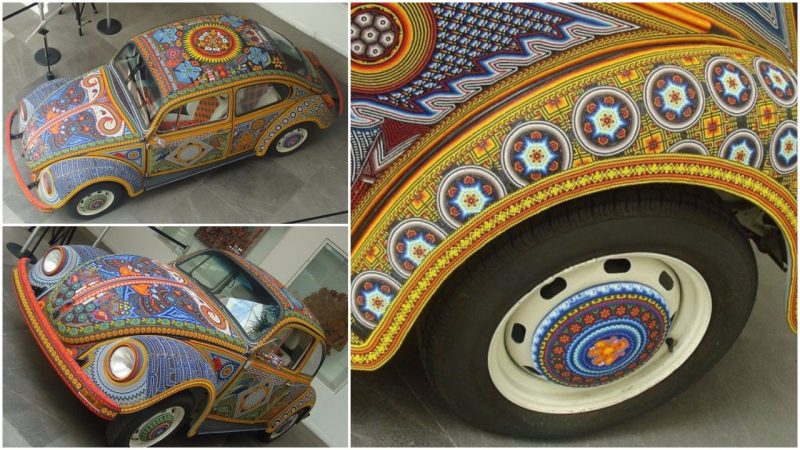
Click Here to read all about this Volkswagen Beetle.
Source: vintagenews.com





|
What is there to say about this one? If you are already a Volkswagen fan (not literally, what are you thinking people?), then you've probably already heard about one of these. This one has been restored completely, and still drives. It is based in Europe, and at the time of this photograph, was letting adventurous people climb to the top of the rickety ladder. Needless to say, it isn't a Mack truck like most Americans are used to. Also, how appropriate that this firetruck can use all the water onboard to fight fires (not something a regular firetruck can do), since it is aircooled. | ||
 |
I have no idea how old this one is, but by looking at the car, it isn't super
old. The lights onboard are a nice touch, perhaps this one was intended for use
in Nevada, as a mobile lighted casino on the strip. Who knows! I guess the
stereo is out on this one, since all the juice the generator can provide is going
to those lights.
| |
 |
This is what happens when you spill grass seed all over your Beetle after running
it through the mud in springtime. Sooner than you can say where's my herbicide,
the grass is there. Good luck finding a mower to keep this one trimmed. This
is one of the coolest Beetle pictures I've seen in a long time. Ch-Ch-Ch-ChiaBeetle!
| |
 |
This is a good example of what happens when you are sitting in your garage,
with a beer and a blow-torch in hand, and are pondering the ways to increase
your gas mileage. This is a real car, and it is being serviced at a mechanic's
shop somewhere in Austria. I have heard about short Beetles like this in Mexico
too.
| |
 |
This is a real Beetle used in Canada to transport crews to small hydroelectric
plants in remote areas. Since large crews and heavy equipment aren't necessary
in each case, this company developed a railroad version of the Beetle. It looks
like an easy conversion: just remember not to steer. I wonder what moose up there
think of this when it is coming towards them on the tracks...
| |
 |
Several people have tried to float/boat their ways across large bodies of water with their Beetles. This can be done, since the Beetle is a well built car, and has excellent seals. The car in this picture had special double seals on everything, and special custom seals on cables and shafts that normally weren't water tight. This guy really has this Beetle floored in the English Channel... |